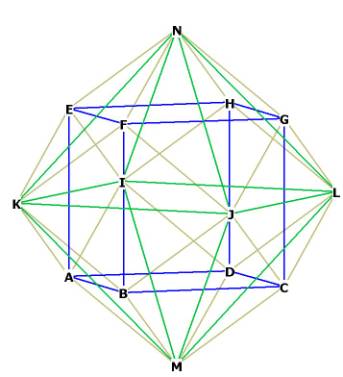|
(2019
midterm assignment) Model Midterm answers 2019 (Index) Essay 3: Web Highlights |
 |
Kimberly Berlin
Awe and Imminent Doom
Over the course of this semester, I have been
continually fascinated with the concept of the sublime. The terms index on the
course website describes this concept as “beauty mixed with terror, danger,
threat -- usually on a grand or elevated scale.” Since being introduced to it, I
have begun seeing it in almost all of the novels, games, and movies I consume. I
am inexplicably drawn to the sense of awe and terror that accompanies
Apocalyptic narratives, such as Maggie Stiefvater’s
The Raven Cycle series, Final Fantasy
XV, and Avengers: Infinity War. Although these titles are not strictly science
fiction, they each deal with an impending threat to the universe. There’s
something both exciting and terrifying about the end of all life as we know
it—we would never wish for such a tragedy to occur, but maybe, just maybe,
everything might turn out alright in the end. Whether it does or not, a truly
sublime story leaves its mark on a person.
In his 2017 essay
Comparative Futures, Tanner House
writes, “When discussing the ‘literature of the future,’ it is absolutely
necessary to acknowledge the fears, concerns, and anxieties of both the past and
present. Without the context of where we are and where we have been, speculating
about the future of humanity becomes a pointless exercise in futility, grounded
in nothing but the fantastical.” I agree wholeheartedly with this wise
assertion. Often in apocalyptic stories, the threat that exists in the unknown
future stems from an anxiety toward the present. Something is going terribly
wrong, -- be it climate change, alien invasion, or the zombie disease -- and the
future of humanity or the whole universe is at stake. This narrative search for
a solution to present-day fears sometimes turns into an ironic or satirical
portrayal, villainizing the person or group supposedly at fault and justifying
any actions the hero may take in order to save the day. Ultimately, though, a
hero to some is a villain to others. Who is worthy to decide what actions will
be taken to stave off impending doom?
Whether an apocalypse actually happens or is
miraculously averted, the fears portrayed as it looms ever closer arise in
response to a threat. In the 2004 movie
The Day After Tomorrow, much of the Northern Hemisphere experiences a rapid
succession of debilitating natural disasters, ushering in a new Ice Age. The
elements are a frequent source of sublime terror, especially in light of our own
ticking time-bomb of climate change. Blizzards, hurricanes, and fires all spark
that primal anxiety that inspires so many of the stories we tell ourselves. On
this subject, Nina Shaver writes in her 2015 essay
Beautiful Destruction, “In a literary
sense, sublime is this idea that incorporates beauty with terror and
destruction. … Fire is symbolic of new life, new beginnings. It is also symbolic
of destruction. … [In Parable of the
Sower] They admired the fire when it was far in the distance, but as it
closed in on them, it took everything in its path and, had it caught up with
Lauren and her group, it would have consumed them as well.” Anyone who has ever
been camping knows how mesmerizing it is to stare into the heart of a burning
blaze. This element, which can level whole forests and destroy countless human
lives, contains such beauty that one finds it hard to look away. I imagine the
scene in Parable, where Lauren and
company are almost overtaken by the great fire, to have that same element of
both terror and awe. Shaver impactfully describes the concise truth surrounding
fire as a sublime destroyer.
Not all of these apocalypses deal with
catastrophic climate change, however. Sometimes, the scariest thing is our own
dehumanization. In The Time Machine,
the Time Traveler gets up close and personal to the two races descended from
humanity. The scary thing is that they (and the giant crabs and black blob) bear
very few actual resemblances to humans. What happened to all our achievements,
all our hard work? Is it all for nothing? Fariha Khalil writes, in her 2015
essay The Possible Fates of the Human
Race, “This particular novel [Parable]
describes a dystopian existence of a future set in a situation within a very
fanatical, scary and overall crazy society, which is the complete opposite of a
utopia.
In the novel the characters are minimized to their
basic human instincts and needs. Fire, as one of four classical elements, is
used in this book as a sort of drug equivalent to sex in its ability to inflict
human passion (111). We see that people are brought back to such natural
elements as fire in order to receive gratification and pleasure, and ultimately
wreak havoc (246).” We see that same concept of the sublime here, where fire --
that wondrous and deadly element -- becomes twisted through the use of the
“pyro” drug, further affecting its “ability to inflict human passion.” Khalil
sets a striking reminder that Parable
sets dehumanized junkies and street poor against the apparent last hope for a
better world. Indeed, what is more frightening than losing our own humanity?
 |
 |
 |
